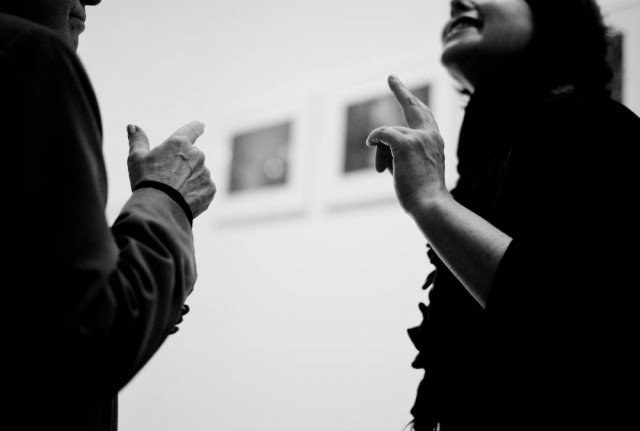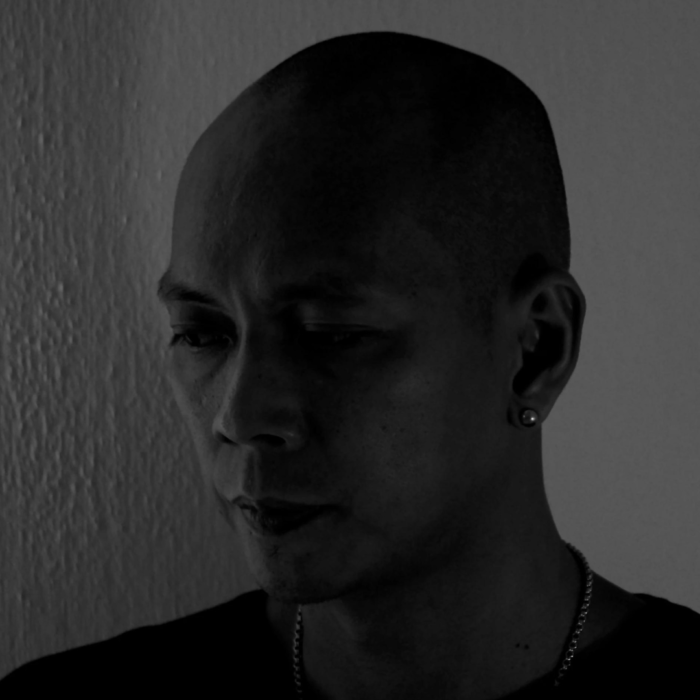 In the area of visual arts, an art mediator acts as a bridge between art and people. S/he creates the context and develops the tools to make art accessible to everyone. In other terms, s/he is an intermediary who helps people to discover and explore works of art (visual or audio art, multimedia displays, performances) and creative practices.
In the area of visual arts, an art mediator acts as a bridge between art and people. S/he creates the context and develops the tools to make art accessible to everyone. In other terms, s/he is an intermediary who helps people to discover and explore works of art (visual or audio art, multimedia displays, performances) and creative practices.
To achieve this objective, the art mediator devises programs linked to exhibitions and objects in order to engage diverse audiences: customized guided tours, family-specific activities, learning resources and devices, events, workshops, live performances, public conferences, talks, debates and discussions.
The art mediator works in close collaboration not only with local or international artists but also with partners from the areas of culture, art, education and welfare, including public authorities, private entities and community groups. S/he designs and implements projects that explore cross-disciplinary approaches and create links between art institutions and individual visitors. It is crucial for her/him to invite people to observe art closely and critically, initiate exchanges, communicate about art and improve her/his audience’s understanding.
Among the many competencies and qualities an art mediator must possess, the following three must be highlighted: excellent knowledge of art; the ability to invent and imagine; and interpersonal communication skills.
Excellent knowledge in art
Works of art (visual, audio, etc.) constitute the essential matter with which an art mediator works. It is fundamental for her/him to understand their nature, their expression and the context of their realization before thinking of different interventional processes aimed at a specific audience. Only then is it possible to help others gain a deeper insight into art, engage in learning it, take time for close and appropriate observation and raise awareness of cultural issues.
Moreover, curiosity is essential. Indeed, to be able to provide relevant information and offer fresh perspectives, the art mediator must stay up-to-date with the latest news and issues in her/his field.
Creativity
A laboratory for ideas is an appropriate image to illustrate the work environment of an art mediator. It is crucial for her/him to be able to try new ideas and test new techniques. Indeed, the art mediator must work out new ways to improve the understanding of art by helping people experience it so that they can make sense of it, articulate individual reflections and develop personal opinions. S/he does so by imagining media and inventing tools: booklets, digital tools, games, workshops, educational and pedagogical documents, etc. Furthermore, s/he must present a variety of points of views and voices through, for example, collaborations with other professionals (art experts, dancers, musicians, architects, actors, etc.), interactive workshops, storytelling, etc.
Therefore, art mediation may be direct or indirect. Sometimes the presence of the cultural mediator is required, other times documents and devices may substitute for her/his physical presence. Occasionally, both the direct and indirect approaches may be combined.
Interpersonal communication
Transmission is at the heart of an art mediator’s mission. The methods must be adapted to the works of art, the audience and the context.
Novice or expert, young or senior, individual or group: an art mediator needs to adjust her/his approach and discourse to each type of listener and encourage participation. Furthermore, a good command of the appropriate language is require in order to address a large audience.
During a guided tour, for example, the art mediator might observe people’s reactions as they interact with the works and adjust her/his presentation accordingly. Moreover, group dynamics and individual interests must be taken into account.
At the same time, s/he must be able to step aside and let the artwork, or its observation, occupy center stage. Her/his role is to accompany people and to leave enough space, and even silence, to allow for self-reflection. Discussion and exchange should always be open-ended and encourage people to question points of views.
The art mediator plays an essential role in explaining art, identifying common references and making art a part of people’s lives.
Art mediation is a dynamic, evolving profession with a large diversity of practices. This is reflected in the different terms used to describe it:
The Geneva charter of art mediation can be found here: http://www.ville-geneve.ch/fileadmin/public/Departement_3/Publications/mediateur-charte-ville-de-geneve.pdf).
Photo credit: Susan NYC via photopin cc


 In the area of visual arts, an art mediator acts as a bridge between art and people. S/he creates the context and develops the tools to make art accessible to everyone. In other terms, s/he is an intermediary who helps people to discover and explore works of art (visual or audio art, multimedia displays, performances) and creative practices.
In the area of visual arts, an art mediator acts as a bridge between art and people. S/he creates the context and develops the tools to make art accessible to everyone. In other terms, s/he is an intermediary who helps people to discover and explore works of art (visual or audio art, multimedia displays, performances) and creative practices.


A very interesting insight into a role which I never even knew existed. It also sounds like you never get two days the same when you're working as an art mediator. Thank you.